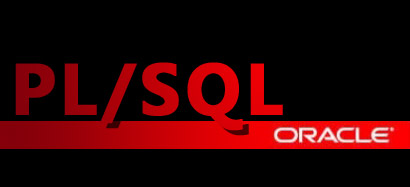Procedure
- is a PL/SQL sub program used to execute set of statements which takes parameters as input and returns output (optional).
- is compiled and stored in the database as a schema object.
- can be reused with other sub programs.
- can be modified or deleted
Oracle Procedures has the following:
- Declarative part
- Executable part
- Exception-handling part
Declarative part contains the following and these items are local and exist only till subprogram exists.
- Declarations of types
- Cursors ( Names Control Structures)
- Constants
- Variables
- Exceptions
- Nested subprograms
Executable part contains
- Statements that assign values
- Control execution
- Process the data like Insert/update/delete
Exception-handling part
- The exception-handling part contains exception handlers, which deal with exceptions raised during execution.
Procedure Syntax:
PROCEDURE name [ ( parameter [, parameter ... ] ) ]
IS
[declaration statements]
BEGIN
executable-statements
[ EXCEPTION
exception handler statements]
END [ name ];
Component usage in Procedure:
- Procedure name comes after standard keyword PROCEDURE
- Procedure parameters are optional, takes parameters as input and return something as output. Return output is also optional.
- Procedure variables will be declared between the IS and BEGIN statements.
- There should be at least one executable statement before the END or EXCEPTION keywords.
- Exception handling is optional
- Procedure is called as an executable PL/SQL statement.
- We must call procedure with out parentheses (brackets) when procedure does not have any parameters
Parameter Modes in Procedure:
- IN
- OUT
- IN OUT
Sample procedure with input parameters:
CREATE PROCEDURE create_customer (
p_cust_name VARCHAR2,
p_cust_id customer_table.customer_id%TYPE)
AS
BEGIN
INSERT INTO customer_table (customer_name, customer_id)
VALUES (p_cust_name, p_cust_id);
EXCEPTION
WHEN OTHERS
THEN
DBMS_OUTPUT.PUT_LINE (
'Exception while creating customer. Error: ' || SQLERRM);
END;
Above procedure takes customer name and customer id as input parameters and creates data into customer table.
Procedure execution:
create_customer('ASK HAREESH',10001);
Sample procedure without input parameters:
CREATE PROCEDURE validate_customers
AS
v_cust_count NUMBER;
BEGIN
SELECT COUNT (1) INTO v_count FROM customer_table;
IF v_count > 0
THEN
DBMS_OUTPUT.PUT_LINE ('Customer data exists');
ELSE
DBMS_OUTPUT.PUT_LINE ('Customers data not available');
END IF;
DBMS_OUTPUT.PUT_LINE (
'Exception while validating customers. Error: ' || SQLERRM);
END;
Above procedure have no parameters and just execute set of statements.
Procedure execution:
validate_customers;
Sample procedure with input and output parameters:
CREATE PROCEDURE create_customer (
p_cust_name VARCHAR2,
p_cust_id customer_table.customer_id%TYPE,
x_status OUT VARCHAR2)
AS
BEGIN
INSERT INTO customer_table (customer_name, customer_id)
VALUES (p_cust_name, p_cust_id);
x_status := 'S';
EXCEPTION
WHEN OTHERS
THEN
DBMS_OUTPUT.PUT_LINE (
'Exception while creating customer. Error: ' || SQLERRM);
x_status := 'E';
END;
Above procedure takes customer name and customer id as inputs and returns customer creation status as output.
Procedure execution:
DECLARE
v_customer_status VARCHAR2 (1);
BEGIN
create_customer (p_cust_name => 'ASK HAREESH PVT LTD',
p_cust_id => 10001,
x_status => v_customer_status);
DBMS_OUTPUT.PUT_LINE ('Customer creation status: ' || v_customer_status);
END;
Sample procedure with output parameter:
CREATE PROCEDURE get_customer_count (x_cust_count OUT NUMBER)
AS
BEGIN
SELECT COUNT (1) INTO x_cust_count FROM customer_table;
EXCEPTION
WHEN OTHERS
THEN
DBMS_OUTPUT.PUT_LINE (
'Exception while getting customer count. Error: ' || SQLERRM);
x_cust_count := NULL;
END;
Procedure execution:
DECLARE
v_customer_count VARCHAR2 (1);
BEGIN
get_customer_count (v_customer_count);
DBMS_OUTPUT.PUT_LINE (
'Total customers exists in system: ' || v_customer_count);
END;
Sample procedure with IN OUT parameter:
CREATE PROCEDURE update_customer (p_cust_name IN OUT VARCHAR2)
AS
v_new_cust_name v_new_cust_name.customer_name%TYPE;
BEGIN
v_new_cust_name := 'New ' || p_cust_name;
UPDATE customer_table
SET customer_name = v_new_cust_name
WHERE customer_name = p_cust_name;
COMMIT;
p_cust_name := v_new_cust_name;
END update_customer;
Procedure execution:
DECLARE
v_customer_name VARCHAR2 (100) := 'ASK HAREESH';
BEGIN
DBMS_OUTPUT.PUT_LINE ('Old customer Name: ' || v_customer_name);
update_customer (v_customer_name);
DBMS_OUTPUT.PUT_LINE ('Modified customer Name: ' || v_customer_name);
END;
Procedure header is nothing but before IS keyword
Procedure Header contains
- Procedure name
- Parameter List if any
Procedure Body is nothing but after IS keyword
Procedure Body contains
- Declaration
- Execution
- Exception handling
A procedure need not do anything like below sample procedure
CREATE PROCEDURE nothing IS
BEGIN
NULL;
END;
We can append the name of the procedure after the END keyword like below
CREATE PROCEDURE nothing IS
BEGIN
NULL;
END nothing;
Recompile PROCEDURE:
We can recompile the procedure with below statement.
ALTER PROCEDURE update_customer compile;



27D2855C96
ReplyDeletemmorpg oyunlar
sms onay
mobil bozum
güvenilir takipçi satın alma
eft ile takipçi